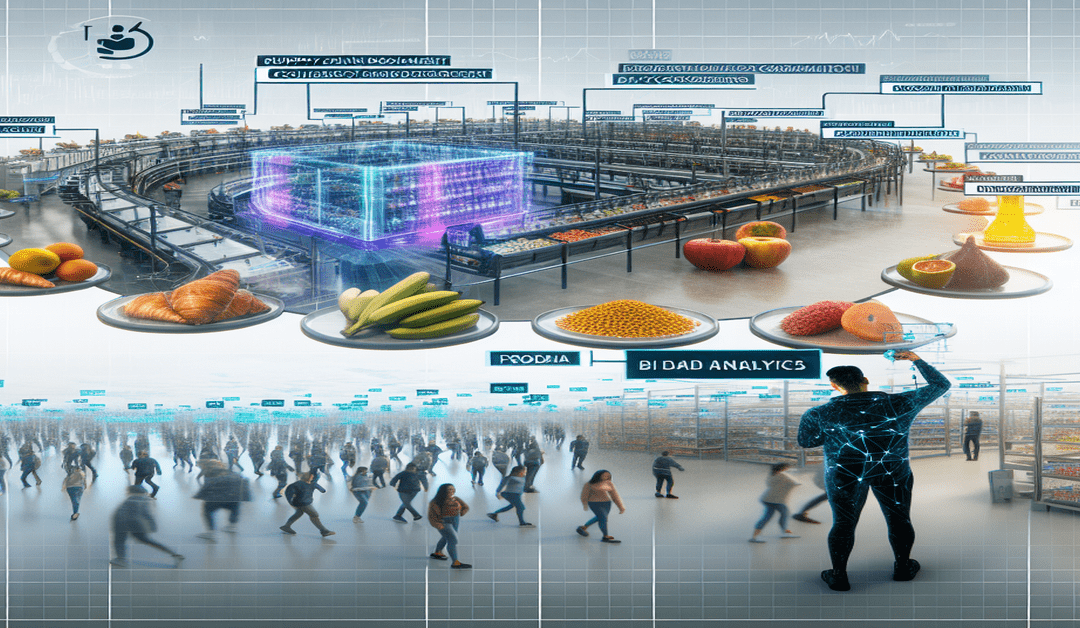The Power of Big Data Analytics in the Food Industry: Revolutionizing Decision-Making and Efficiency
In today’s fast-paced and highly competitive food industry, companies are constantly seeking ways to improve their decision-making processes, streamline operations, and deliver high-quality products to consumers. Enter big data analytics – a game-changing technology that is revolutionizing the way food businesses operate. By harnessing the power of vast amounts of data, food companies can gain invaluable insights into every aspect of their business, from supply chain management to consumer behavior.
Understanding Big Data in the Food Industry
Big data refers to the massive volumes of structured and unstructured data generated by various sources, such as sensors, social media, and transaction records. What sets big data apart from traditional data is its sheer volume, velocity, and variety. In the food industry, big data encompasses information from farm to fork, including data on crop yields, inventory levels, consumer preferences, and more. By leveraging advanced analytics tools and techniques, food companies can extract meaningful insights from this data and make data-driven decisions that drive business growth and innovation.
Transforming Supply Chain Management
One of the most significant applications of big data in the food industry is in supply chain management. By analyzing data from various touchpoints along the supply chain, companies can optimize their operations, reduce costs, and improve efficiency. For example, big data analytics can help predict demand for specific products, allowing companies to adjust their inventory levels accordingly and avoid stockouts or overstocking. Additionally, by tracking shipments in real-time and analyzing logistics data, companies can identify bottlenecks and inefficiencies in their supply chain and take corrective action to streamline operations.
Enhancing Food Safety and Quality
Another critical area where big data is making a significant impact is in food safety and quality. With the increasing complexity of global food supply chains, ensuring the safety and quality of food products has become more challenging than ever. Big data analytics can help food companies identify potential food safety risks and take proactive measures to mitigate them. By analyzing data from various sources, such as sensor data from production lines and social media sentiment analysis, companies can detect potential contamination issues early on and take swift action to prevent foodborne illnesses.
Driving Innovation and Personalization
Big data is also enabling food companies to better understand their customers and develop targeted marketing strategies. By analyzing consumer data from various sources, such as social media, loyalty programs, and online reviews, companies can gain deep insights into consumer preferences, behavior, and sentiment. This information can be used to develop new products that meet evolving consumer needs and preferences, as well as to create personalized marketing campaigns that resonate with specific consumer segments.
Moreover, big data analytics is driving innovation in the food industry by enabling companies to experiment with new product ideas and test them in virtual environments before launching them in the market. By simulating various scenarios and analyzing data on consumer reactions, companies can refine their product offerings and minimize the risk of failure.
Challenges and Future Directions
Despite the immense potential of big data analytics in the food industry, there are still significant challenges that need to be addressed. One of the biggest challenges is data integration, as food companies often have siloed data systems that make it difficult to gain a holistic view of their operations. Additionally, there are concerns around data privacy and security, as companies need to ensure that they are collecting and using consumer data in an ethical and transparent manner.
Looking ahead, the future of big data in the food industry is bright, with emerging technologies such as artificial intelligence (AI) and blockchain poised to take data analytics to the next level. AI algorithms can help automate data analysis and decision-making processes, while blockchain can enable secure and transparent data sharing across the supply chain. As these technologies mature and become more widely adopted, we can expect to see even more transformative applications of big data in the food industry.
Conclusion
Big data analytics is no longer a nice-to-have in the food industry – it is a necessity for companies that want to stay competitive and meet the evolving needs of consumers. By leveraging the power of data, food companies can make more informed decisions, optimize their operations, and deliver high-quality, safe, and personalized products to consumers. While there are still challenges to be addressed, the future of big data in the food industry is incredibly exciting, with the potential to drive unprecedented levels of innovation and growth.
So, if you’re a food industry professional looking to stay ahead of the curve, now is the time to embrace big data analytics and unlock the full potential of your business. Start exploring how you can leverage data to gain a competitive edge, and don’t be afraid to experiment with new technologies and approaches. The future of food is data-driven – are you ready to take the leap?
#BigDataAnalytics #FoodIndustry #DataDrivenDecisions
-> Original article and inspiration provided by Nature
-> Connect with one of our AI Strategists today at ReviewAgent.ai

